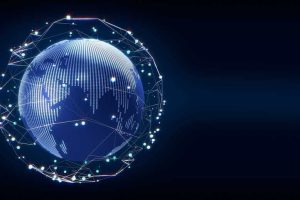On March 22nd 2023 an open letter urged all AI laboratories to ‘immediately pause for at least six months the training of AI systems more powerful than GPT-4. This letter was signed by technological stalwarts like Elon Musk, Apple co-founder Steve Wozniak and Stability AI CEO Emad Mostaque along with thousands of other people including AI experts. The letter also urges governmental intervention if the suggested pause is not acted upon soon.
I wonder what it is about AI that makes even its ardent supporters want to take a break from it. This letter actually caused a feeling of relief in me as I like to believe that the digital leaders and technological developers know for a fact that rapid advancement in generative AI also means a greater digital divide.
The letter was written based on the widely supported Asilomar AI principles highlighting that ‘advanced AI would be a medium of bringing about significant transformation to life on our planet but it necessitates efficient planning and management along with proper resource allocation’. The letter also states how output from AI labs has surpassed current levels of planning and management and not even creators of AI can fully understand, control or predict the progress of digitalisation.
In Federico Guerrini’s “Bridging The Digital Divide In The AI Era – The UNDP Way”, the dialogue between him and UNDP’s Chief Digital Officer, Robert Opp goes into depths of technological advancement and society. Be it a national COVID-19 vaccine tracking system or the national digital payment system (UPI) in India or Bangladesh citing the UNDP’s support in order to digitise government services; countries reached out for digital resources and technological developments from other privileged nations. Opp calls this, “A framework of inclusive digital transformation which ensures that no user is left behind.” However this seems easy as a statement coming from developed or developing countries. Often least developed countries (LDCs) stay far behind or get excluded entirely. For LDCs to actually access and use technological luxuries like we do, means investing in the same research and development facilities that the first world countries do. But for most third world countries the proportion of spending on research and development relative to the gross domestic product is even lesser than 1%.
It is clear that the developed world has an undeniable upper hand when it comes to rapid AI progress and wealth to aid that progress. At the same time it is noteworthy that while we jump from GPT-4 to 5,6,7 etc. the LDCs are tackling urgent priorities like sanitation, healthcare, education and food.
The digital divide is also strikingly visible in the aspect of high-speed internet connectivity it is not easy to make internet access available and most importantly- affordable to all.

From the graph above we see that the first world nations have no scarcity of mobile cellular customers. However a significant discrepancy becomes more apparent when analysing countries like Pakistan, India and Nigeria where despite large populations only 80-90 mobile subscriptions exist per 100 individuals. The World Bank statistics indicate almost the same results where the accessibility situation gets more serious in countries like South Sudan, Mozambique and the Democratic Republic of the Congo where the subscription are as low as 30-50 per 100 people. At this point it is worth mentioning the impact of limited availability of internet. Imagine no updates of latest world news, no Google searches for school or college work and no e-commerce.
Another point that I feel the need to address vehemently is how limited access to AI in education may deepen the gap in achievement levels. Initial calculations from Jisc’s national centre for AI (NCAI) show that for a student to purchase major generative AI tools and educational plugins, it could approximate to €1100 annually deeming it unaffordable for many. Without appropriate connectivity even free technology is as good as nothing.
In Jisc’s 2022-2023 digital experience insights (survey for students), approximately one third of respondents in higher education and a quarter in further education indicated that challenges with inadequate WiFi and poor mobile data connectivity were obstructing their education.
Dr. Philippa Hardman’s “The AI- Education Divide” gives interesting insights about AI’s role in educational equity. She mentions the aspect of existing biases being encoded in new AI. The grading controversy which occurred in the UK in 2020 was witness to this. Due to the COVID-19 pandemic, the British Government announced the cancellation of the advanced level qualification exams or the A-levels and instead launched a process of teachers giving predictive grades to students based of their historic performances. The predicted grades were fine tuned by Ofqual- a regulatory algorithm. The algorithm was believed to predict the performances of test takers more accurately than human teachers. However, almost 40% of predicted performances were graded lower and only 2% of marks were increased.
Students who suffered the most were the ones with high grades but less advantaged schools.
Where did this algorithm go wrong?
The algorithm was fed data about historic performances of secondary schools individually. Consequently students scoring high but being associated to the lesser advantaged schools were penalised because of their historically low performing schools. This also meant that students from wealthier schools most likely had their grades raised. Anton Ovchinnikov, a professor at Queen’s University’s Smith School of Business called this situation not just a grading debacle but a “crisis of data abuse”. Students from disadvantaged background lost their fair chance at equality because even after scoring high an algorithmic bias would hamper their future possibility of applying to better educational institutions.
Conclusion
AI holds the potential to deepen societal disparities and perpetuate inequality. With advancement in technology there is also a growing gap between those with accessibility to digital resources, education and infrastructure and those without. The positives of AI are not unfamiliar to us. A 2020 data study states that AI can aid in achieving 79% of targets in the sustainable development goals. AI has also brought a dawn of possibility with reference to healthcare and education. However, it is positive only if there is equitable participation of all. This means that it’s time for the developed world to reach out with financial and technological help to the third world countries so that no one gets left behind in development. AI advancement is definitely the next step for us as a society but it can create a larger digital divide between the privileged masses that can access technology and the under privileged that are still far from the world at their fingertips.


